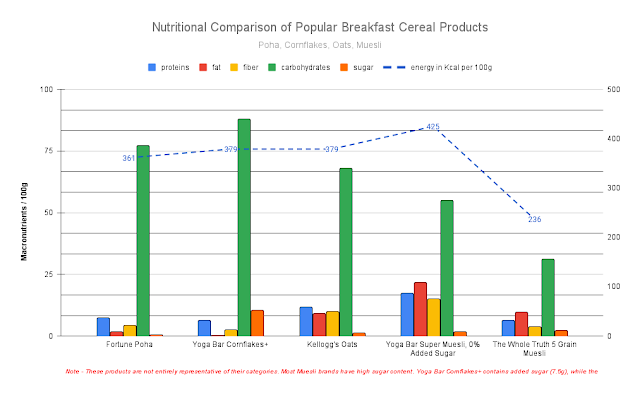Key Facts from ICMR-INDIAB Survey on Indian Diets
Highlights from the research study on Dietary profiles and associated metabolic risk factors in India from the ICMR–INDIAB survey-21
The Crisis:
- NCDs account for 68% of all deaths in India
- India, home to nearly 20% of the global population, has undergone rapid nutrition and epidemiological transitions over past two decades
- Cardiometabolic diseases are rising alarmingly due to dietary transitions
What Indians Are Eating (The Problem):
- Indian adults consume 65-75% of daily calories from carbohydrates (one of the highest in the world)
- 61% eat white rice as primary staple, 34% eat whole wheat flour
- Millet consumption is high only in Karnataka, Gujarat, and Maharashtra
- India accounts for 15% of global sugar consumption
- Added sugar consumption exceeds recommendations in most states
- Saturated fat intake exceeds recommendations in many states (from ghee in North, palm/coconut oil in South)
- Protein intake is suboptimal at just 12% of daily calories
The Carbohydrate Problem:
- Indian diets are characterized by high intakes of low-quality carbohydrates (white rice, milled whole grains, added sugar)
- Milled whole wheat flour has glycemic index similar to refined wheat and white rice
- Most millets are polished (bran and germ removed), which pushes blood sugar levels even higher than white rice
- Fast carbs are rapidly absorbed and increase sugar levels, making you hungry sooner
What Should Change (Recommendations):
- Ideal ratio: 50% carbs (including max 5% sugar), 25-30% fats, 20% protein, 3-6% fiber
- Currently consuming 65-75% carbs vs. recommended 50%
- Need to increase protein from plant sources (pulses, legumes), dairy (especially fermented like curd/cheese), eggs, and fish.
- ICMR recommends a protein intake of 0.8g/kg of body weight per day
- Replace refined carbohydrates with legume protein to improve glycemic control
- Cook millets with vegetables, legumes, and fiber to slow digestion
Policy Recommendations:
- Shift subsidies from refined grains (Re 1 rice/wheat) to pulses, legumes, and healthier oils
- Extend minimum support prices to pulses, legumes, and dairy (not just cereals)
- Provide healthier oils through public distribution system (PDS)
- Need alternative strategies beyond current carbonated drink taxes (haven't reduced consumption)
- Better labeling of added sugars (many unregulated foods don't label)
- Multisectoral approach involving healthcare, agriculture, and socioeconomic policy
The Affordability Challenge:
- Carbohydrates are cheap and easily available
- Dairy, animal, and plant proteins are expensive
- This makes carbs the "natural choice" for many Indians
- Policy reforms needed to make protein sources accessible and affordable
Practical Advice:
- Gradually increase ratio of pulses, legumes, and dairy in diet
- Limit low-quality carbs (white bread, refined grains)
- Prioritize slow carbs (beans, legumes, whole grains, nuts, fruits, vegetables)
- Vegetarians: add plant protein and fermented dairy to every meal
- Non-vegetarians: add egg and fish at least once daily
- Daily exercise to control weight and improve metabolic health
Bottom Line: Indians eat too many carbs (especially refined ones), not enough protein, and policies need urgent reform to make healthier foods affordable and accessible.




Comments
Post a Comment